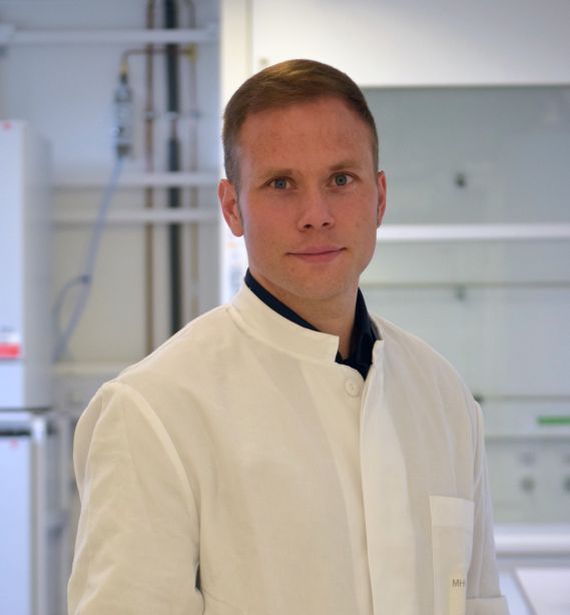Junior Research Group Dr. Volker Winstel "Pathogenesis of bacterial infections"

We congratulate Volker Winstel on his appointment to the W2 professorship for “Translational Microbiology and Immunopathology of Infections” at Justus Liebig University Gießen! He took up this professorship on 01.09.2024.
The Junior Research Group „Pathogenesis of bacterial infections“ was jointly established by the Institute of Medical Microbiology and Hospital Epidemiology of Hannover Medical School and the TWINCORE Centre for Experimental and Clinical Infection Research GmbH.
Hospital- and community-acquired infections caused by drug-resistant and pathogenic bacteria represent a global public health threat. Our research group focuses on the pathogenesis of medically relevant bacterial pathogens such as methicillin-resistant Staphylococcus aureus (MRSA). S. aureus causes skin and soft tissue infections with attack rates of 1-3% for the general population each year; this microbe is also a frequent cause of endocarditis and bacteremia. Primarily, our team studies S. aureus host-pathogen interaction and the pathology of staphylococcal infections which includes manipulation of host multicellular assemblies that together enable pathogen replication and dissemination of disease.
Future work seeks to explore the contribution of specific human genes towards bacterial pathogenesis and disease. Specifically, we focus on human signaling cascades and cellular pathways which are targeted by S. aureus-derived cytotoxins. In this manner, S. aureus eliminates various immune cells thereby affecting the clinical outcome of acute und recurrent infections. By using cutting-edge technologies and animal models of infectious disease, current projects also focus on human genetics and infectious disease pathology. Overall, these studies are designed to answer the question why human populations exhibit variable susceptibility towards S. aureus disease. Ultimately, our discoveries may help to develop new anti-infective therapies to combat multi-drug resistant pathogens, including MRSA.
Most important publications:
-
Winstel V*, Schneewind O, Missiakas D*. Staphylococcus aureus exploits the host apoptotic pathway to persist during infection. mBio. 2019;10(6). (*corresponding author, shared)
-
Winstel V, Missiakas D, Schneewind O. Staphylococcus aureus targets the purine salvage pathway to kill phagocytes. Proc Natl Acad Sci USA. 2018. pii: 201805622.
-
Wanner S, Schade J, Keinhörster D, Weller N, George SE, Kull L, Bauer J, Grau T, Winstel V, Stoy H, Kretschmer D, Kolata J, Wolz C, Bröker BM, Weidenmaier C. Wall teichoic acids mediate increased virulence in Staphylococcus aureus. Nat Microbiol. 2017;2:16257.
-
Winstel V, Kühner P, Rohde H, Peschel A. Genetic engineering of untransformable coagulase-negative staphylococcal pathogens. Nat Protoc. 2016;11(5):949-59.
-
Li X, Gerlach D, Du X, Larsen J, Stegger M, Kühner P, Peschel A , Xia G, Winstel V*. An accessory wall teichoic acid glycosyltransferase protects Staphylococcus aureus from the lytic activity of Podoviridae. Sci Rep. 2015;5:17219. (*corresponding author)
-
Winstel V, Kühner P, Salomon F, Larsen J, Skov R, Hoffmann W, Peschel A, Weidenmaier C. Wall teichoic acid glycosylation governs Staphylococcus aureus nasal colonization. mBio. 2015;6(4). pii: e00632-15.
-
Winstel V*, Kühner P, Krismer B, Peschel A, Rohde H. Transfer of plasmid DNA to clinical coagulase-negative staphylococcal pathogens by using a unique bacteriophage. Appl Environ Microbiol. 2015; 81(7):2481-8. (*corresponding author)
-
Winstel V, Sanchez-Carballo P, Holst O, Xia G, Peschel A. Biosynthesis of the unique wall teichoic acid of Staphylococcus aureus lineage ST395. mBio. 2014;5(2):e00869.
-
Winstel V, Liang C, Sanchez-Carballo P, Steglich M, Munar M, Bröker BM, Penades JR, Nubel U, Holst O, Dandekar T, Peschel A, Xia G. Wall teichoic acid structure governs horizontal gene transfer between major bacterial pathogens. Nat Commun. 2013;4:2345.
-
Brown S, Xia G, Luhachack LG, Campbell J, Meredith TC, Chen C, Winstel V, Gekeler C, Irazoqui JE, Peschel A, Walker S. Methicillin resistance in Staphylococcus aureus requires glycosylated wall teichoic acids. Proc Natl Acad Sci USA. 2012;109(46):18909-14.